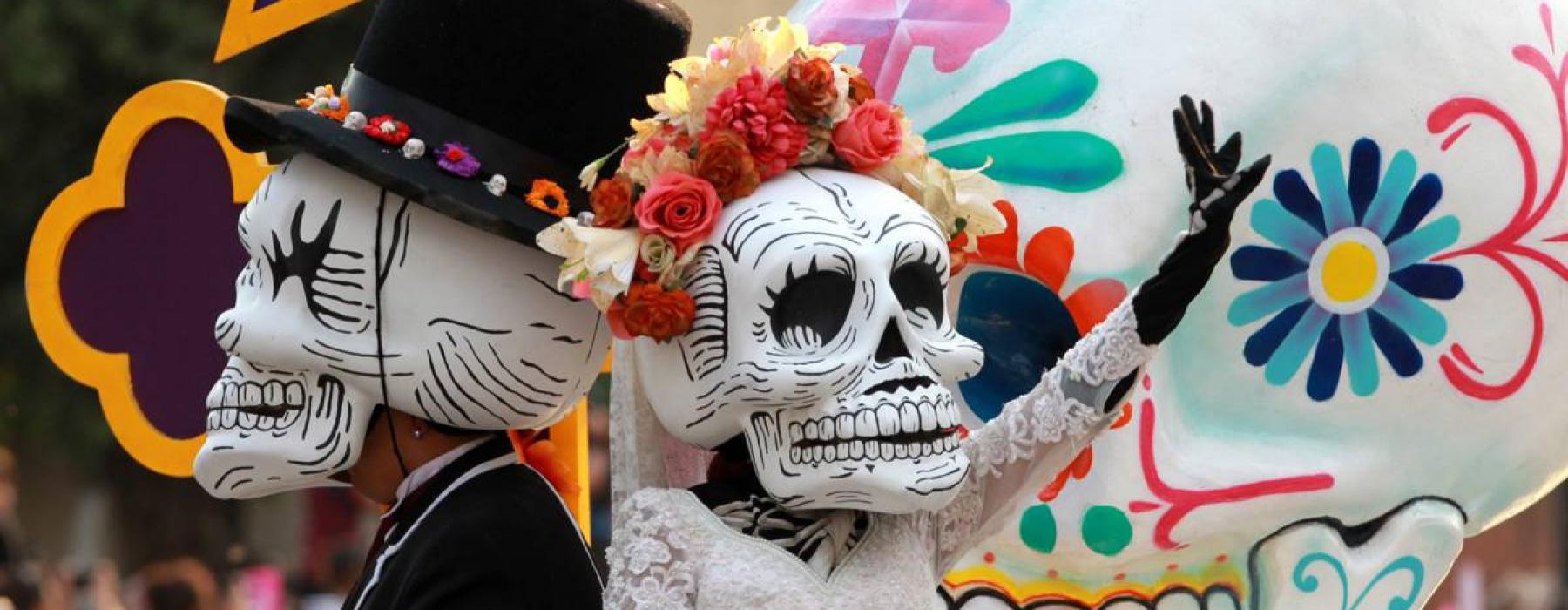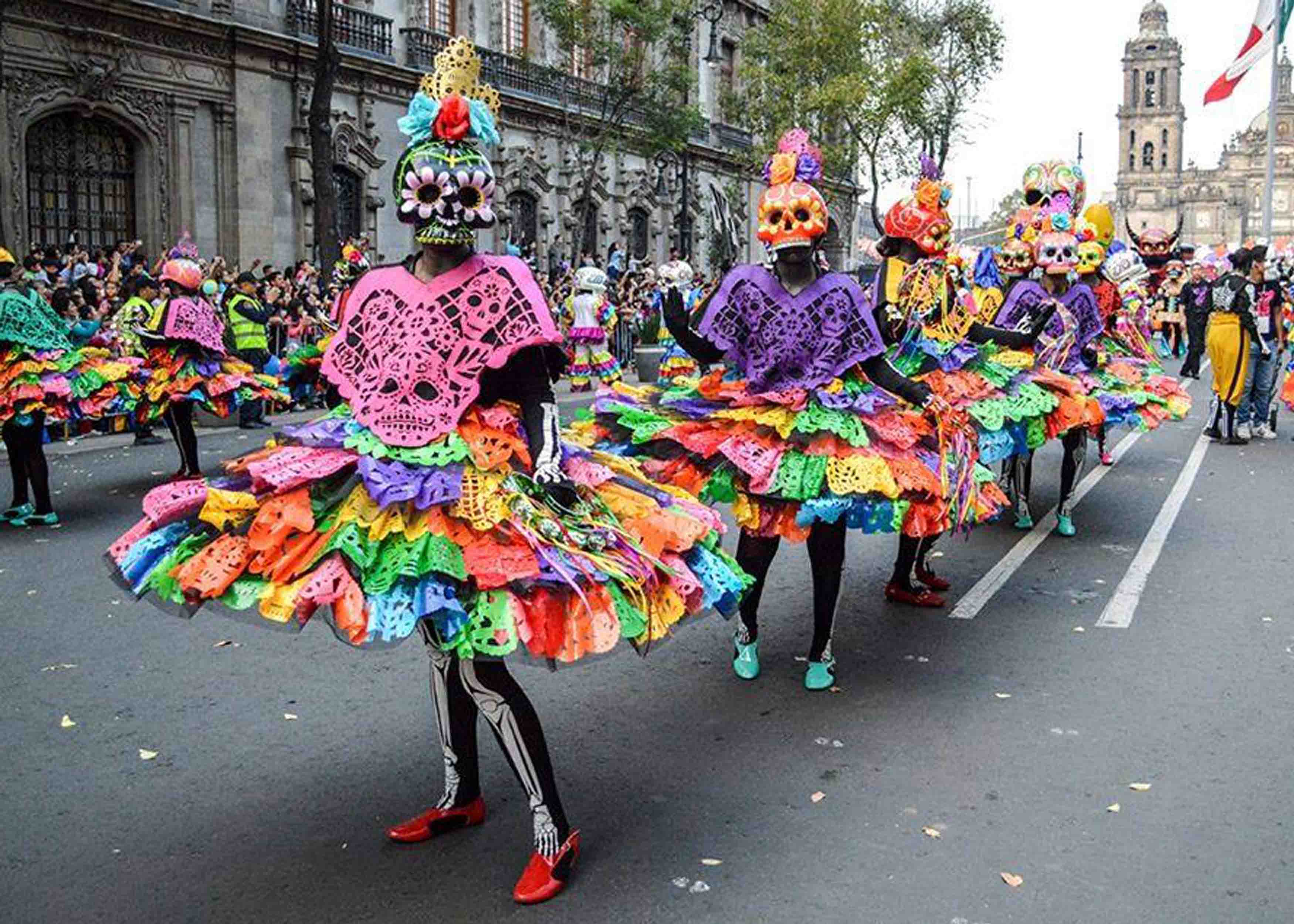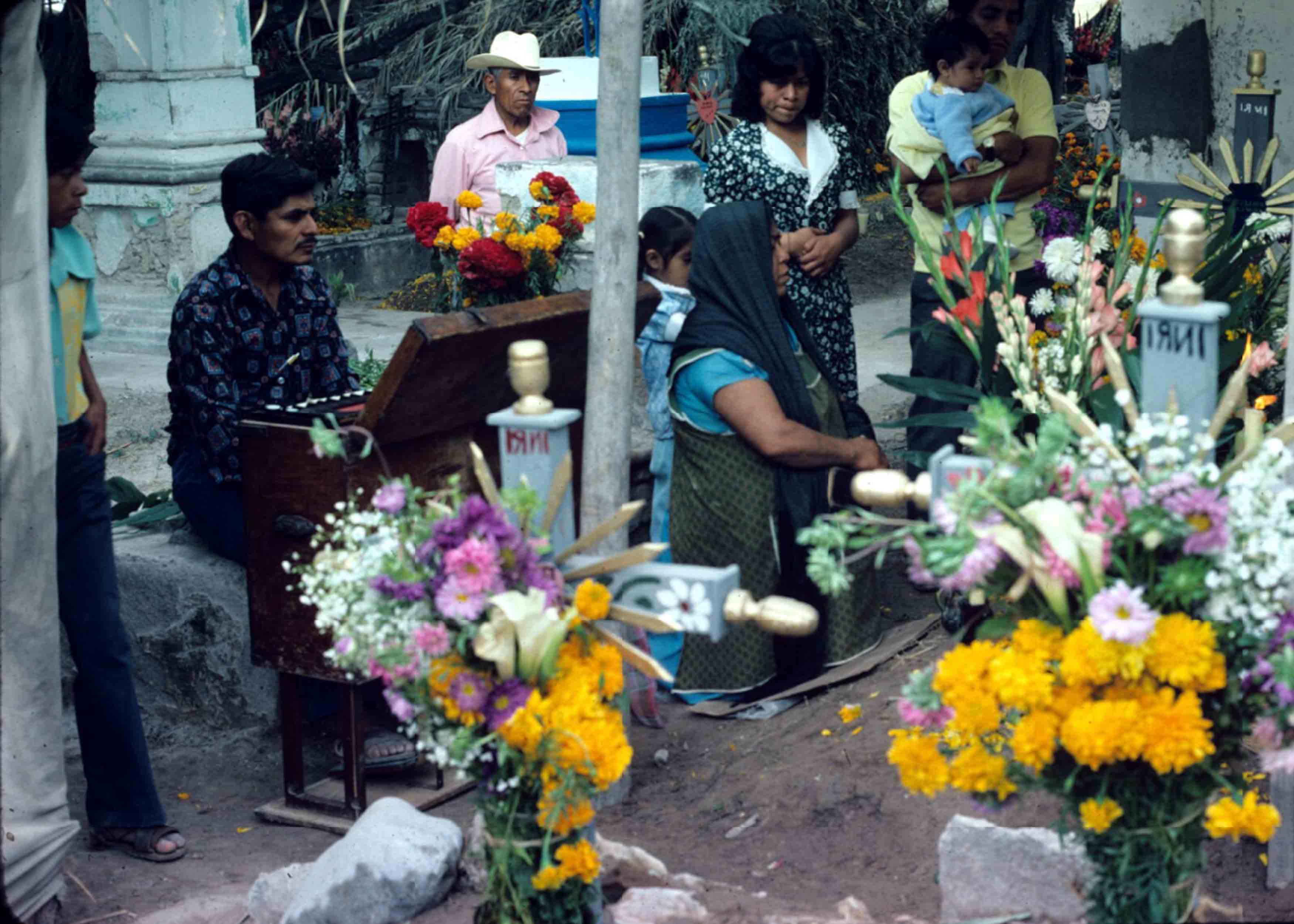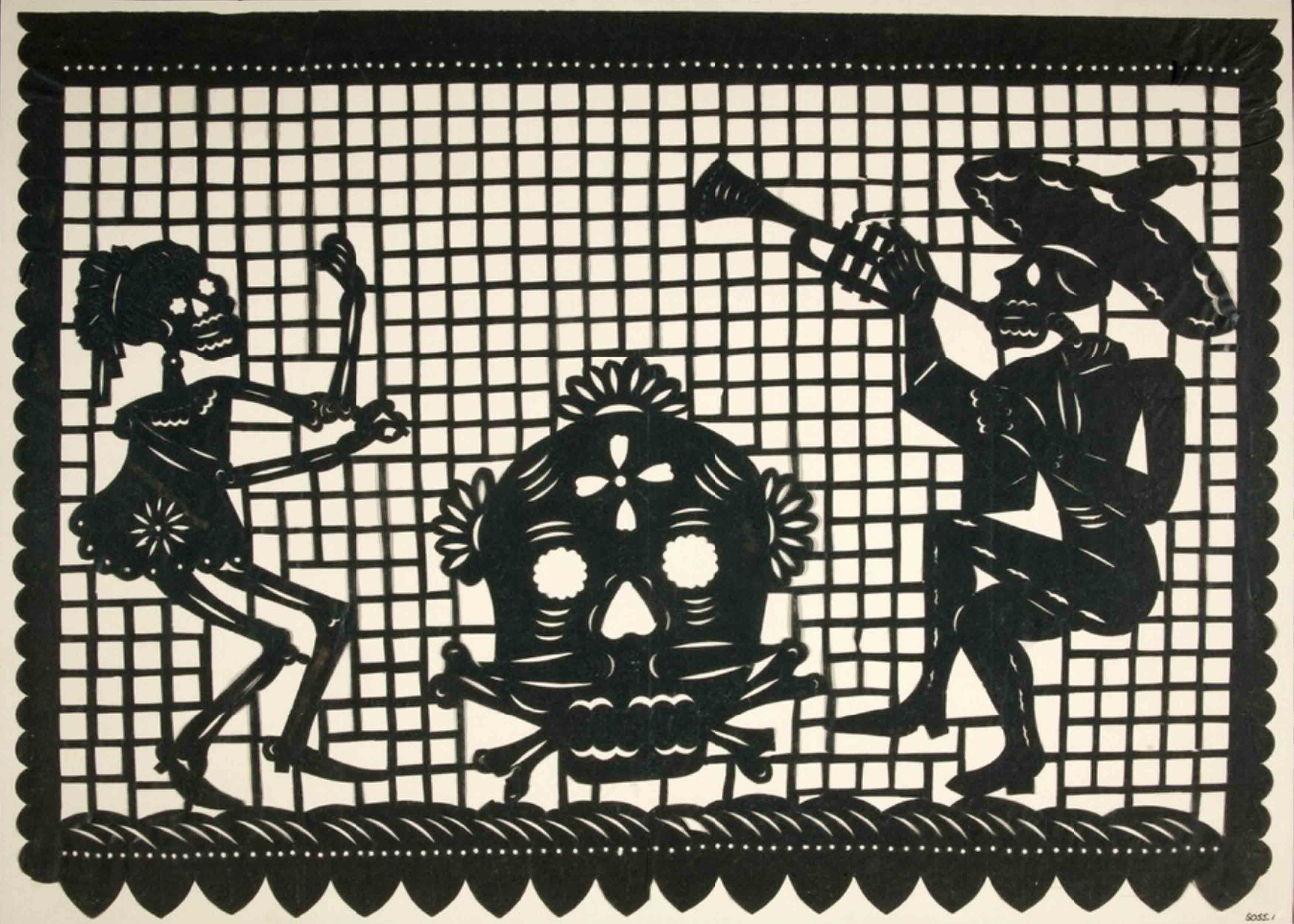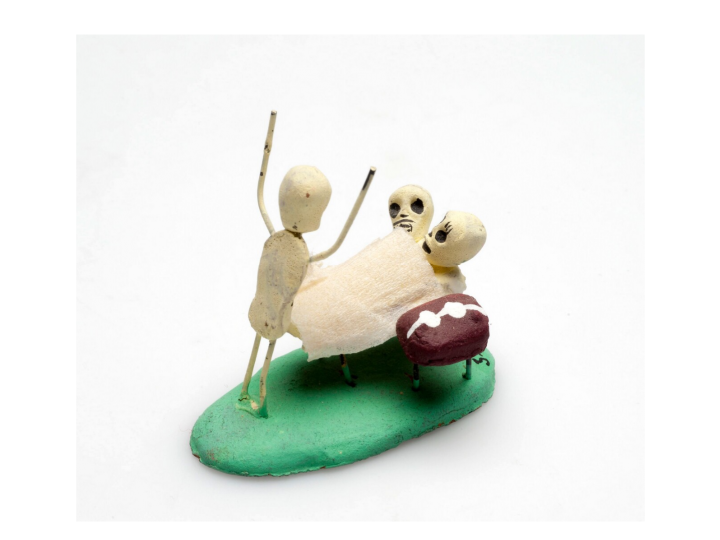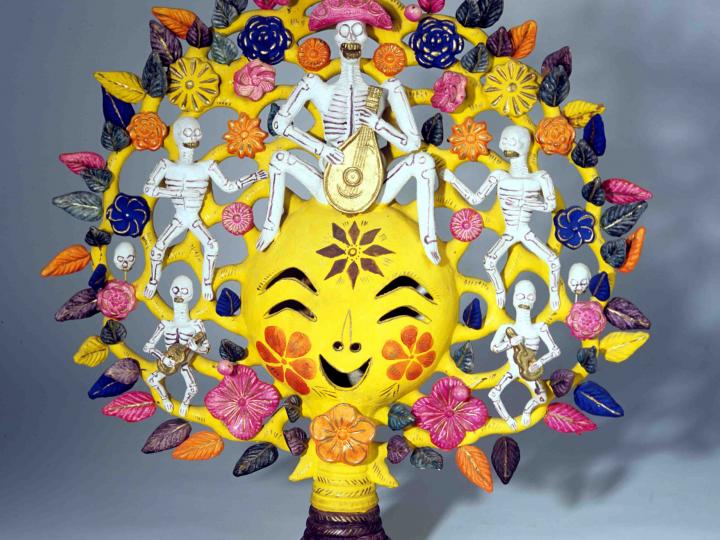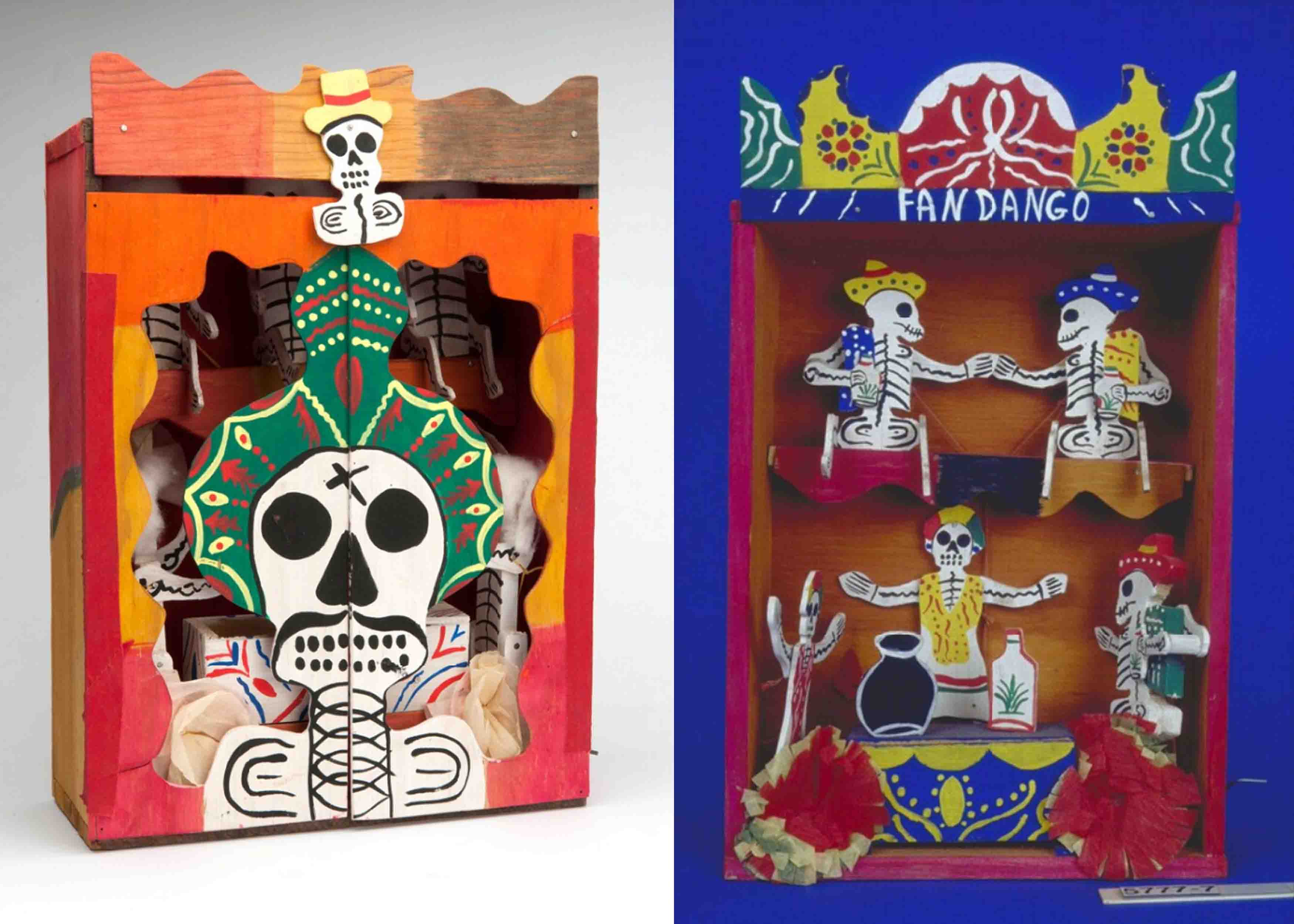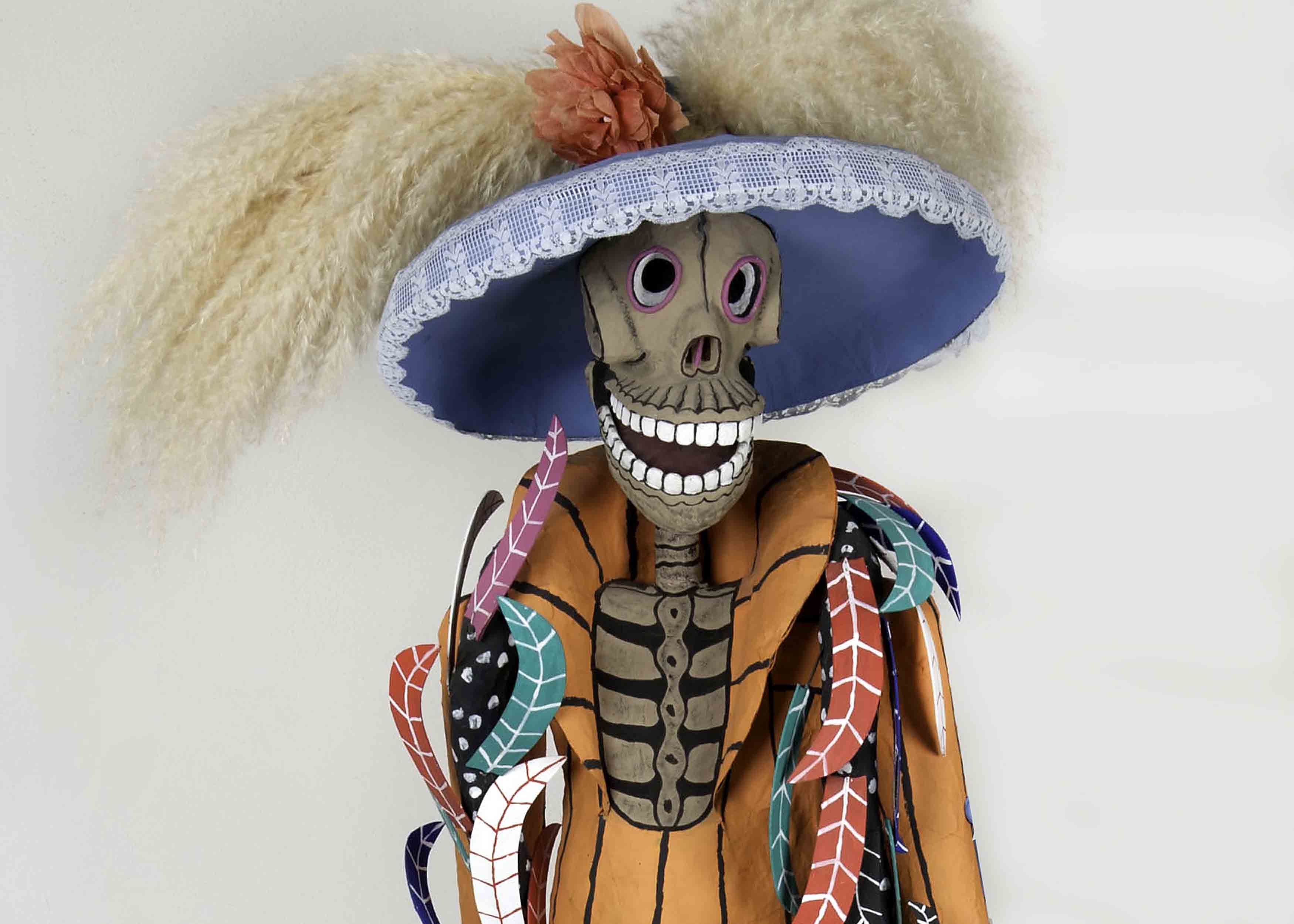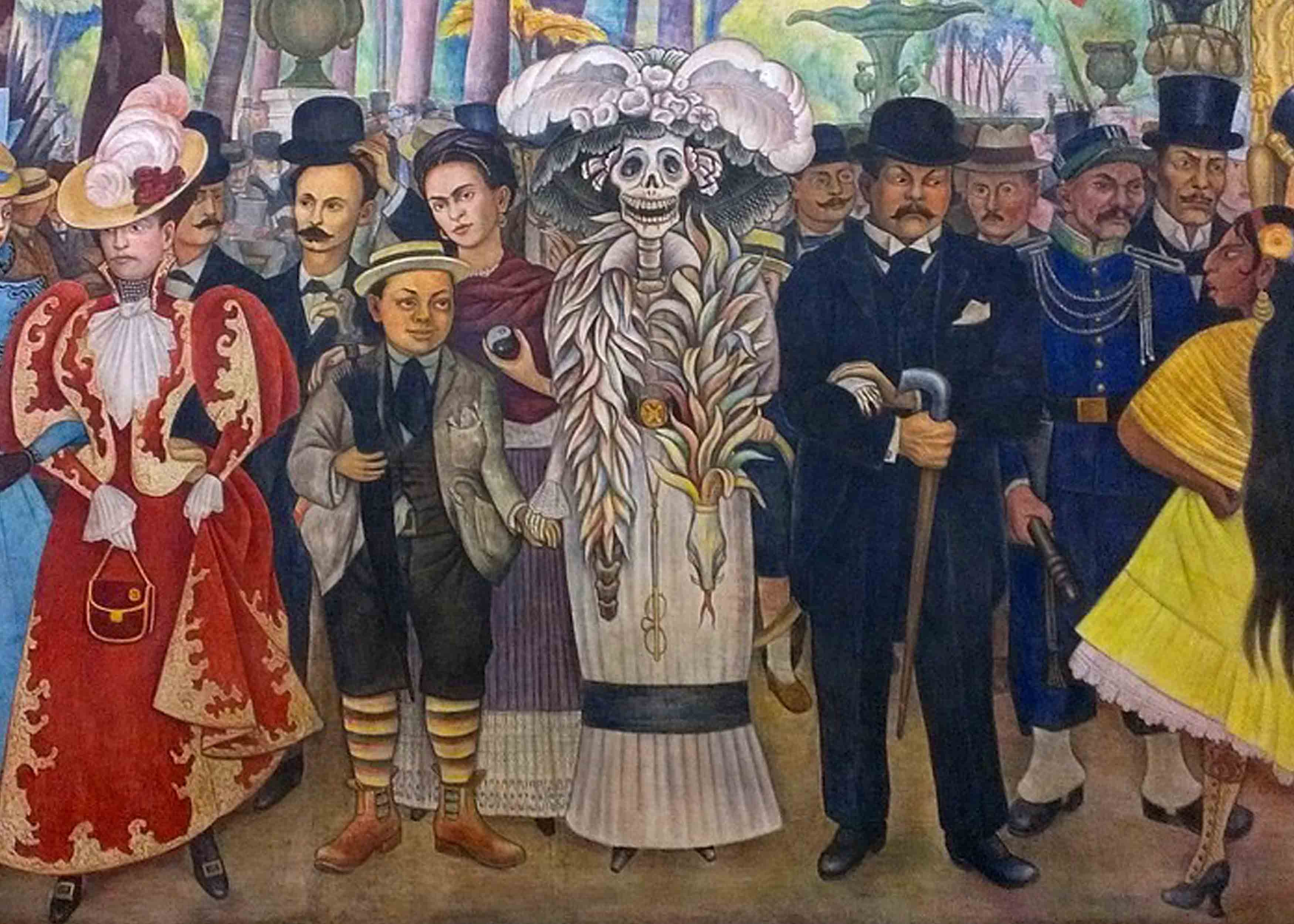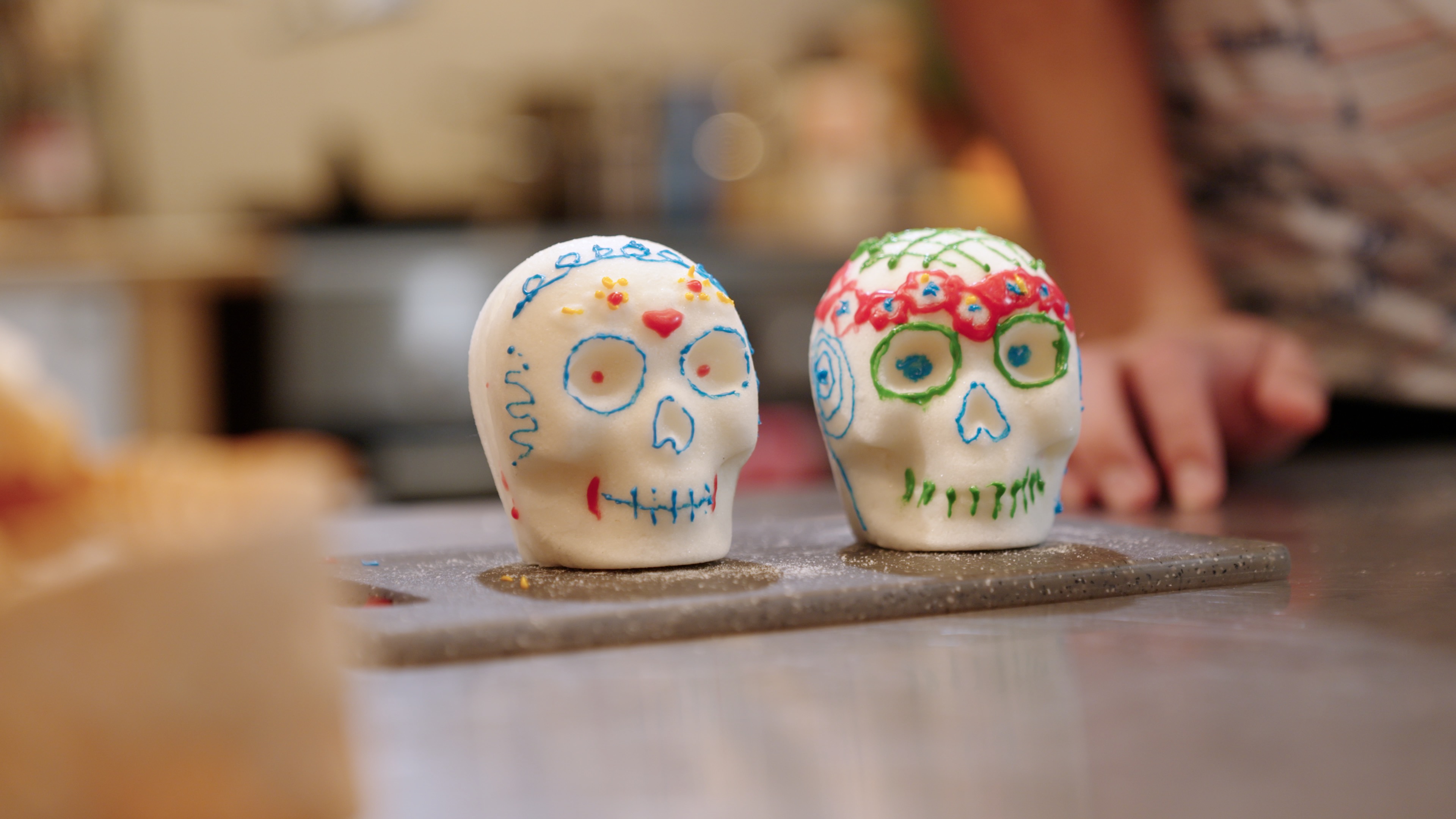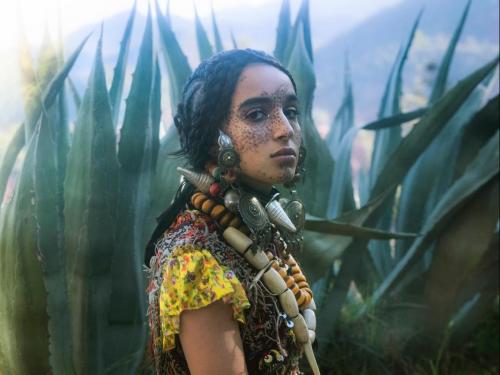During the Day of the Dead urban Mexicans humorously comment on current events. Satirical poems and cartoons in the newspaper depict skeletons playing the leading role in day-to-day situations. Skeleton dolls are dressed like real people, such as firemen or musicians, or portray an uneasy confrontation in the domestic sphere.
The papier-mâché scenes are always cheerful and provide ironic commentary on everyday life, events, well-known people and traits of human character… knowing, of course, that ultimately the same fate awaits everyone.
Below a life-size orchestra of papier-mâché displayed in Museum Volkenkunde, Leiden, in the Central and South America gallery.
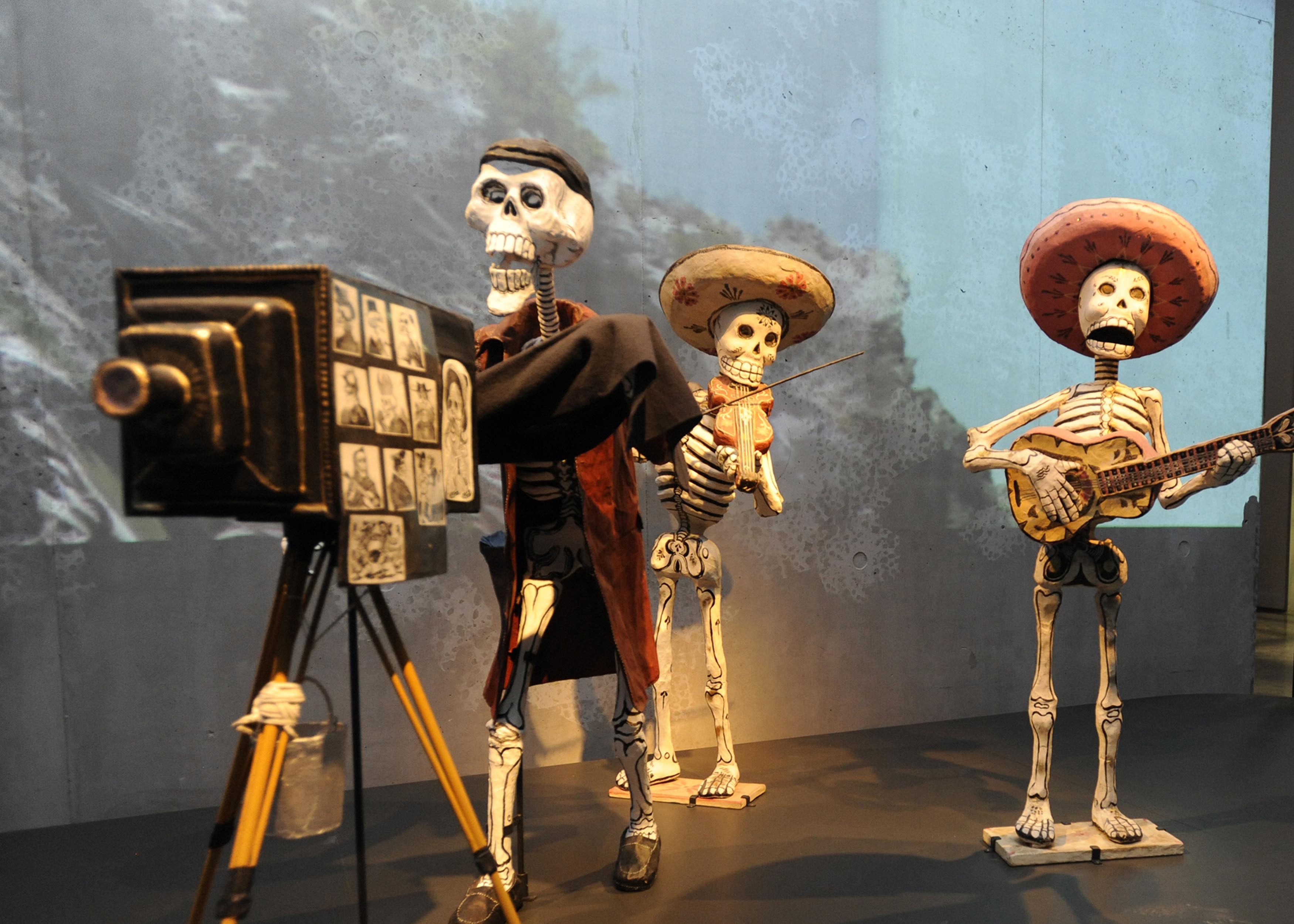
From left to right below
- Motor-bike officers are not well liked in Mexico City but they are everywhere. C. 1990, TM-5290-278
- Two skeletons lying in a bed, an angry spouse at the foot end. A bra is on the table. C. 1990.TM-5290-32
- This earthenware tree-of-life candle holder (c. 1970) depicts an orchestra with a mandolin and two guitars, around a laughing sun and with a garland of leaves, flowers and rosettes. An orchestra of skeleton dolls playing music is a popular theme. RV-4514-133
